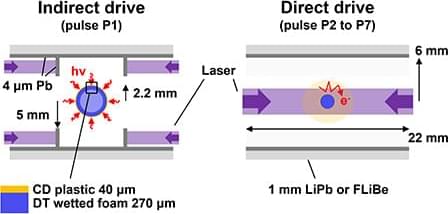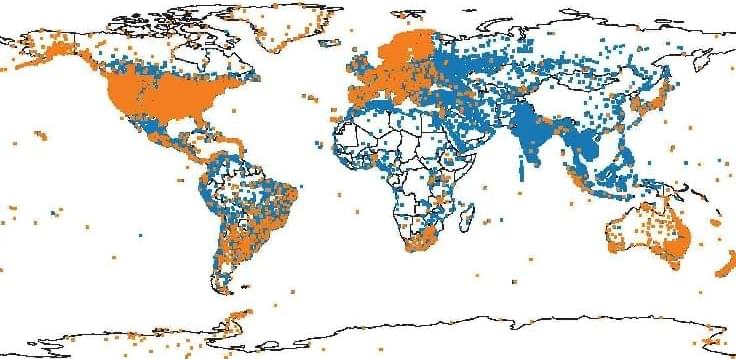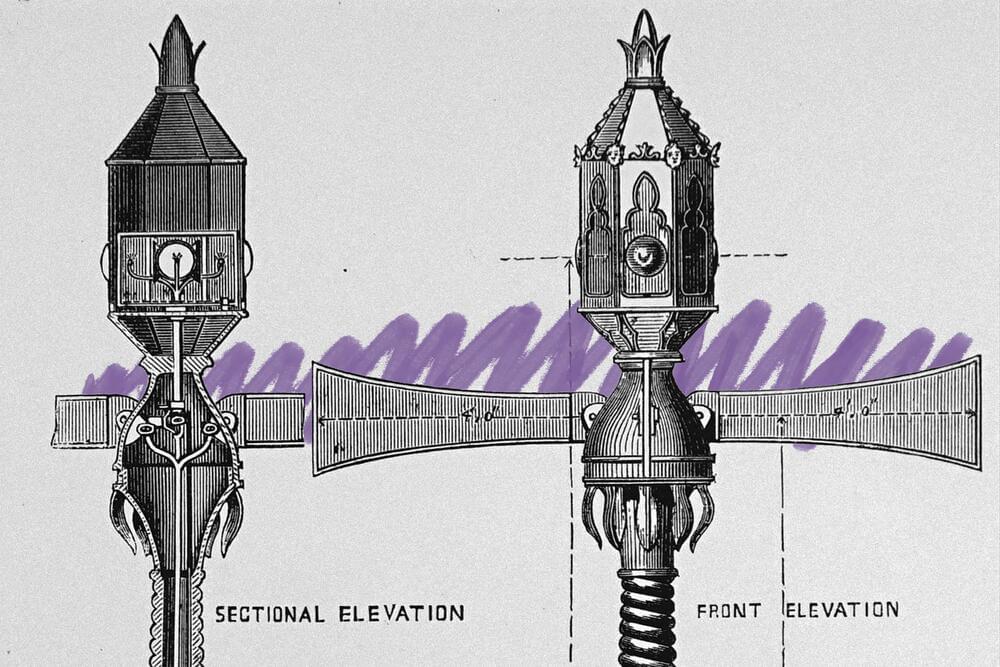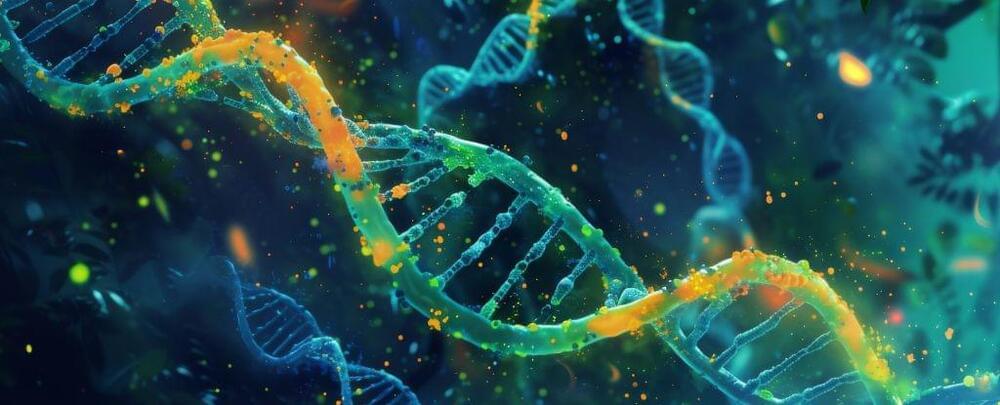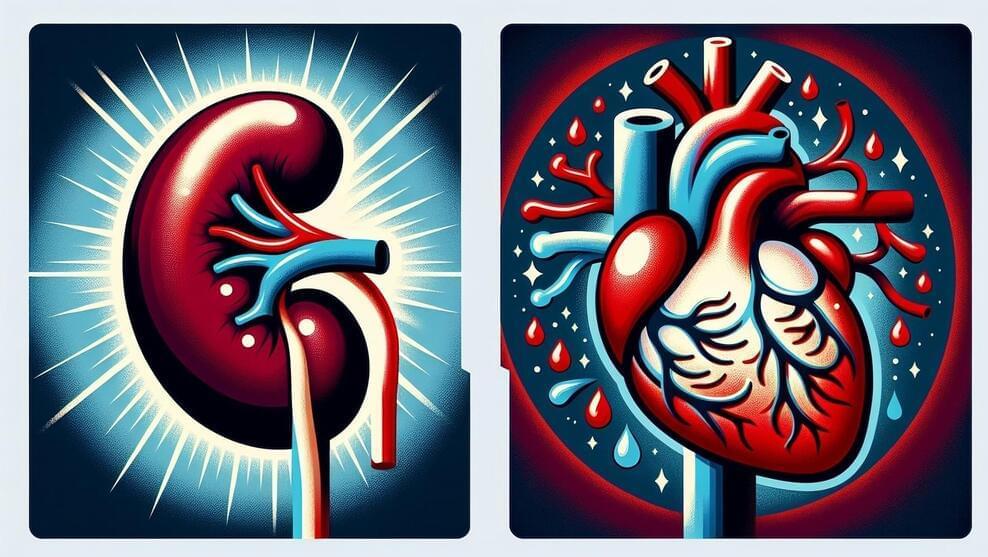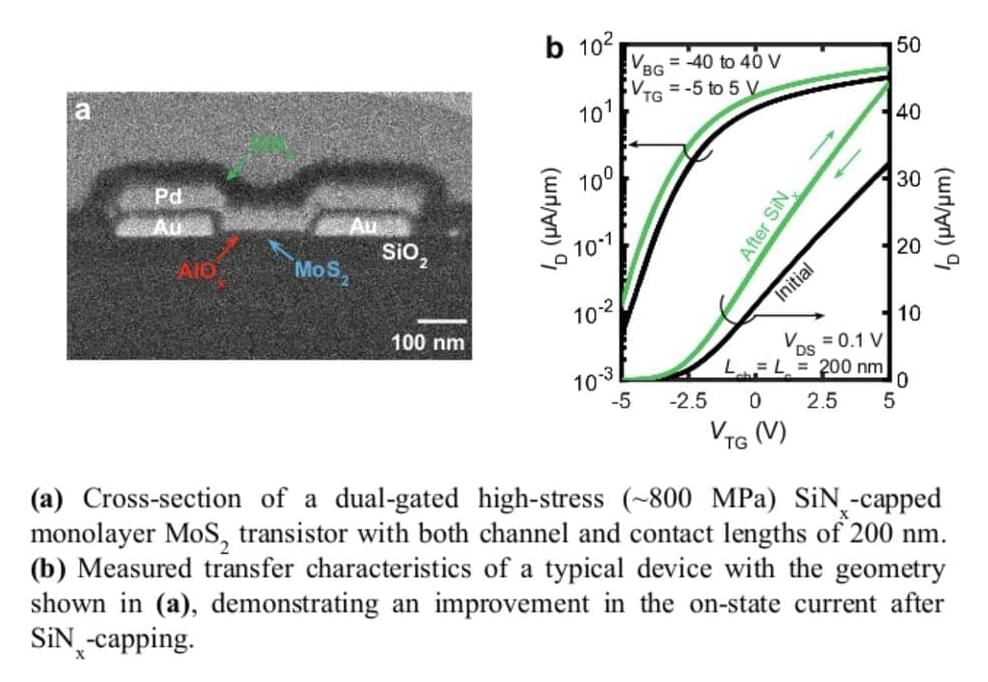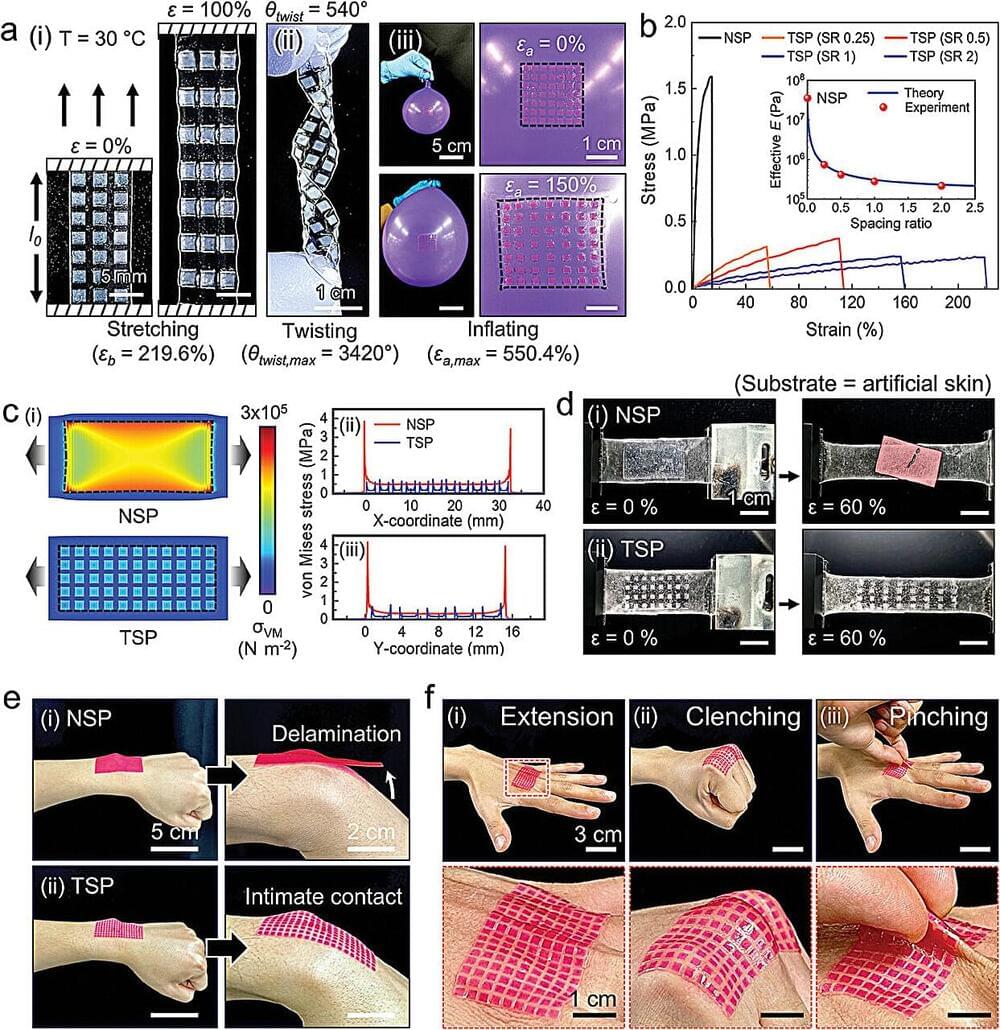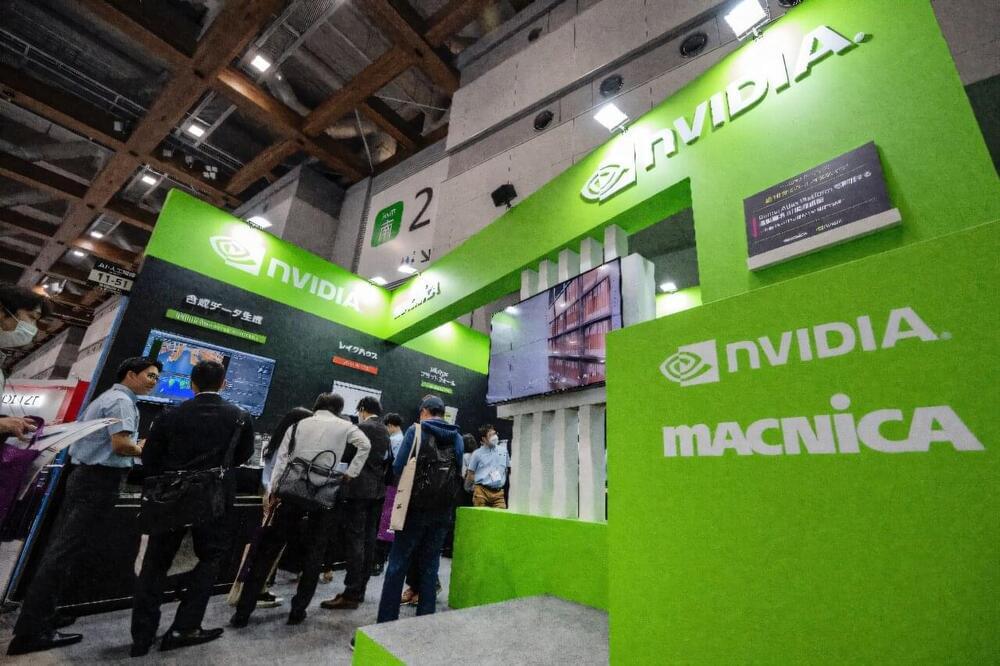This paper presents a “hybrid” approach to direct drive inertial confinement fusion that can exploit a high-energy gas laser with two opposed beams. The target and driver are asymmetric, much like experiments performed on the National Ignition Facility, but have been designed to benefit from scale and their particular compatibility with a fusion power plant. The imploded masses (and areal densities) are increased by a factor of 12 relative to findings by Abu-Shawareb et al. [Phys. Rev. Lett. 129, 75,001 (2022)] and provide a path to high-gain implosions that robustly ignite. The design also mitigates common concerns such as laser imprint and cross-beam energy transfer. We discuss the rationales for a hybrid target, the methods used to control implosion symmetry, and the implication(s) for inertial fusion energy.
